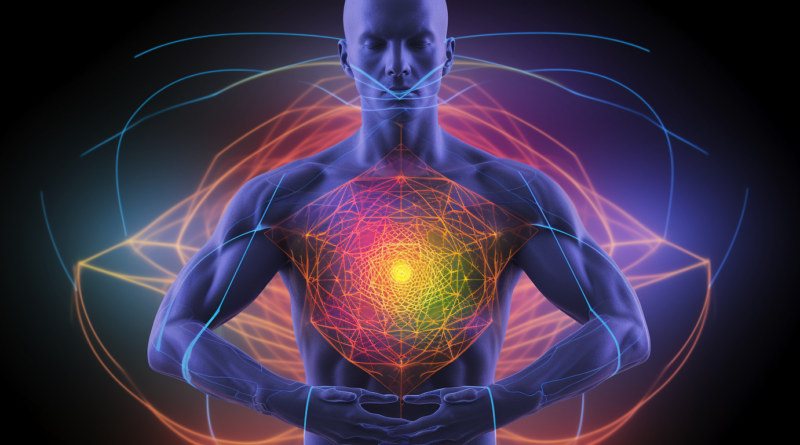The Impact of Emotions on the Mind-Body Connection
The mind and body have long been believed to be separate entities, with little connection between the two. However, recent research has shown that our emotions can have a profound impact on our physical well-being. In fact, the mind-body connection is a complex and intricate system that plays a crucial role in our overall health and wellness. This article will delve into the effects of emotions on the body, exploring how our mental state can influence everything from our immune system to our digestion. By understanding this connection, we can better care for both our mental and physical health. So, let’s take a closer look at the fascinating relationship between our emotions and our bodies.
In our daily lives, we experience a wide range of emotions – happiness, sadness, anger, fear, and more. These emotions not only affect our mental state but also have a powerful impact on our physical health. The mind-body connection is the link between our thoughts, emotions, and physical sensations, and it plays a fundamental role in our overall well-being.
When we experience different emotions, our body responds in different ways. For example, when we are happy, our body releases endorphins which can boost our immune system and reduce stress levels. On the other hand, when we are stressed or anxious, our body produces cortisol, a hormone that can weaken our immune system and lead to various health issues.
Understanding the mind-body connection can help us become more aware of how our emotions affect our physical health. It allows us to recognize patterns and triggers that may be causing physical symptoms such as headaches, stomachaches, or muscle tension. By addressing these underlying emotional factors, we can improve our overall well-being and prevent chronic health issues.
This is where somatic therapy comes in. Somatic therapy is a holistic approach that focuses on the mind-body connection and aims to promote harmony between the two. It involves various techniques such as breathing exercises, body awareness practices, and movement therapy to release tension and promote relaxation.
Somatic therapy works on the principle that the body holds onto emotions and traumas, which can manifest as physical symptoms. By addressing these emotions through the body, somatic therapy can help release tension and promote healing. It can also help individuals become more attuned to their bodies and develop a deeper understanding of their emotions.
In addition to somatic therapy, somatic movement and healing also play a crucial role in promoting a harmonious mind-body connection. Somatic movement is a gentle practice that involves slow and mindful movements to release tension, improve body awareness, and connect with one’s emotions. It can help individuals become more present in their bodies and develop a deeper understanding of how their emotions are connected to their physical sensations.
Furthermore, somatic psychology is another branch of somatic therapy that focuses on using the body as a pathway for self-discovery. It aims to help individuals become more aware of their body sensations, movements, and postures to gain insight into their emotions and behavioral patterns. By developing this mind-body awareness, individuals can learn to recognize and regulate their emotions, leading to better emotional and physical well-being.
In conclusion, our emotions have a significant impact on our physical health, and understanding the mind-body connection is crucial for promoting overall wellness. Somatic therapy, along with somatic movement and psychology, can help us become more attuned to our bodies and emotions, leading to a harmonious mind-body connection. By addressing emotional factors through the body, we can improve our well-being and lead healthier and happier lives.
The Power of Our Emotions
When we experience emotions, we often feel them in our bodies as physical sensations. For example, fear may cause our heart to race and our palms to sweat, while happiness may bring a sense of lightness and warmth in our chest. These physical sensations are a direct result of the mind-body connection and the powerful influence that our emotions have on it.
Our thoughts and emotions are deeply intertwined, with one impacting the other in a constant feedback loop. When we have negative thoughts or emotions, our bodies respond by releasing stress hormones, which can lead to physical symptoms such as headaches, muscle tension, and digestive issues. On the other hand, positive thoughts and emotions can trigger the release of feel-good hormones, promoting relaxation and overall well-being.
This relationship between our thoughts and physical sensations is not one-way, however. Our physical state can also influence our thoughts and emotions. For example, chronic pain or illness can lead to feelings of frustration, sadness, or anger. This highlights the importance of taking care of both our mental and physical health in order to maintain a healthy mind-body connection.
By understanding this link between our thoughts and physical sensations, we can learn to better manage our emotions and their impact on our well-being. This may include practices such as mindfulness meditation, which can help us become more aware of our thoughts and emotions and how they manifest in our bodies. It can also involve seeking support from somatic therapy or somatic movement practices to release tension and promote relaxation.
By acknowledging the strong connection between our minds and bodies, we can begin to take proactive steps towards improving our well-being. Somatic therapy is an effective tool for enhancing this connection, offering a holistic approach to health that addresses both mental and physical needs. By incorporating somatic exercises and principles into our daily lives, we can strengthen our mind-body connection and experience improved overall health.

